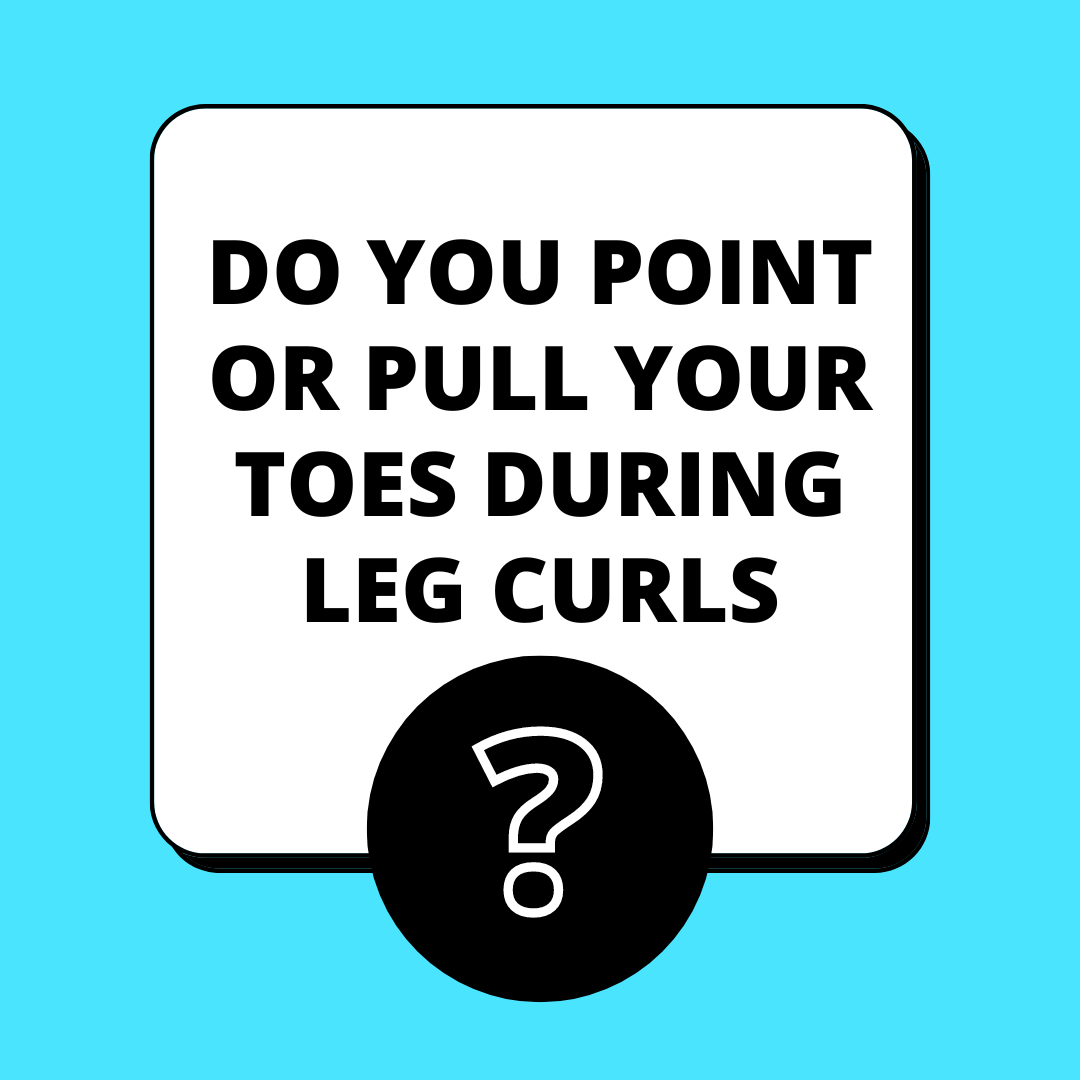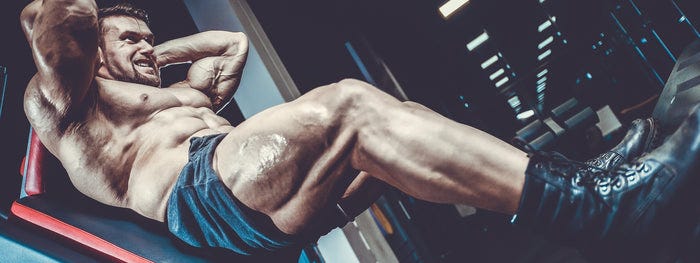Smarter Leg Curls for Better Hamstrings
Using science and physiology to boost your leg curl results.
In this article:
An important leg curl question for you.
Why leg curl foot positioning matters.
Tips and tricks for maximizing your leg curl results.
Multiple leg curl variations for well-rounded benefits.
Let Me Ask You This…
Right out of the gate I have a question for you. It’s an important one for this article, so I want you to comment and tell me your answer.
Now that you’ve commented and checked the video, let me go into a little more detail on what I mean here.
Foot Position Facts
What you do with your toes determines your foot position and foot position is often overlooked during leg curls, but it matters. It matters bigly.
Consider these two facts:
Pulling your toes toward your shins is called Dorsiflexion, which activates both your calves and hamstrings during leg curls.
Pointing your toes away from your shins is called Plantar flexion, which activates the hamstrings and deactivates the calves during leg curls.
If you’ve tried both foot positions already, have you noticed that your leg curls are stronger while you’re dorsiflexed?
It’s because the hamstrings are getting help from the calves. Teamwork makes the dream work.
If dorsiflexion activates the hamstrings and calves and plantar flexion isolates just the hamstrings, and leg curls are meant to isolate the hamstrings, it’s obvious that plantar flexion is the best choice, right? Well, yes and no. As usual, each variant has it’s place in training.
The best outcome, for you, is to understand how foot position changes the activated muscle groups and to know how to put that information to use for your goal.
I’ve already covered how foot position changes the activated muscle groups, so let me get into some different leg curl methods that utilize both positions.
As an important note, these variations and methods can apply to all leg curl variations, not just the particular choices shown in each video. Leg curl variations include:
Lying Leg Curl Machine
Seated Leg Curl Machine
Kneeling Leg Curl Machine
Banded Leg Curl Variations
Nordic Leg Curl
Dorsiflexed to Plantar Flexed Leg Curls
This variation puts both foot positions to use and it works great for overloading the hamstrings during the negative(lowering) phase of each rep.
With the positive(lifting) phase of each lift done in the dorsiflexed position, you’re able to lift more weight than you could in the plantar flexed position.
After the heavy lifting is done by the hamstrings and calves, and you’re about to lower the weight, point those toes and de-activate the calves so all of the weight is on the hamstrings on the way back down.
By utilizing this method, you just put more negative phase stress on your hamstrings than you could if your toes were pointed at all times.
Making sure both the positive and negative phases of a rep are challenging will lead to better results in terms of growth and strength.
To recap, this method works great when you want to overload the hamstrings during the negative phase of each rep.
Dorsiflexed Leg Curls
This variation applies when two goals are at hand:
Move as much weight as possible for the rep range you’re working with.
Activate both the calf and hamstring muscles intentionally.
The method for this one is more straightforward than the dorsiflexed to plantar flexed option.
Your foot position will not change at any point during your reps. Simply maintain the dorsiflexed position from the start of your set until the end.
Plantar Flexed Leg Curls
This foot position is excellent for building up the mind/muscle connection and truly isolating the hamstrings. With no other muscle groups being put to work, it’s so easy to feel the hamstring firing, flexing, and working. Each set becomes an opportunity to connect more closely with your hamstrings.
There are a couple of key points I’d like to mention before you jump into plantar flexed leg curls.
Many people report upper calf cramping during this variation, especially when just starting to use it. This is because the calf muscles are flexed throughout the whole set, which people generally aren’t used to. This can cause cramping, especially at the top of each rep. If this happens to you, you can solve the problem by lightening up the weight and/or reducing just how much you’re flexing those calf muscles.
If you’re not familiar with this variation, and have only done dorsiflexed leg curls in the past, be ready to lighten up the weight. Without calf muscle assistance, it makes sense that your hamstrings can’t suddenly do the work of two muscle groups. If you expect a reduction in weight, it’s not so hard on the ego when it has to happen. It’s normal, so don’t sweat it.
The method for this one is also straightforward.
Your foot position will not change at any point during your reps. Simply maintain the plantar flexed position from the start of your set until the end.
Final Thoughts
Hamstring development makes a huge difference in how your legs looks from the side and the back. Making sure to train your hamstrings properly also improves knee joint integrity.
There are both visual and functional benefits to training your hamstrings, so please don’t leave leg curls and other hip hinge hamstring exercises out of your routine.
The next time you’re working on your hamstrings, pay attention to how you’re positioning your feet. Try the different methods above, think about how different positions activate or de-activate muscles groups, and become a leg curl master!
Thank you for reading,
Ryan




